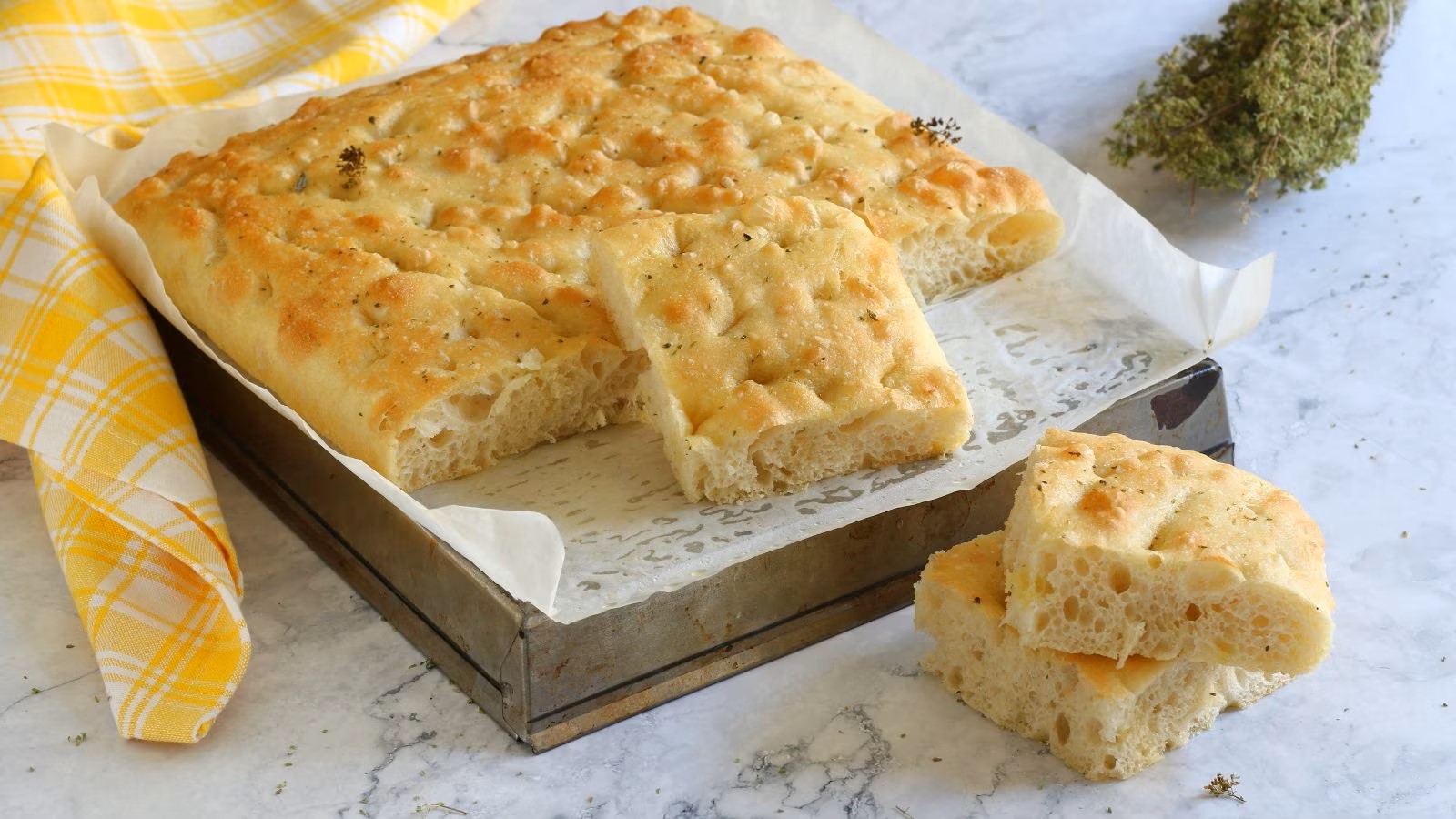

Articles
How To Store Focaccia Bread
Modified: May 6, 2024
Learn how to properly store your homemade focaccia bread with these helpful articles. Keep your bread fresh and delicious for longer.
(Many of the links in this article redirect to a specific reviewed product. Your purchase of these products through affiliate links helps to generate commission for Storables.com, at no extra cost. Learn more)
Introduction
Welcome to the wonderful world of focaccia bread! With its light and airy texture, flavorful toppings, and enticing aroma, it’s no wonder this Italian favorite has gained popularity around the globe. Whether you buy it from a bakery or make it from scratch, one thing is certain – you’ll want to keep your focaccia bread as fresh as possible for the best taste and enjoyment.
In this article, we’ll explore the art of storing focaccia bread to maintain its deliciousness for as long as possible. We’ll discuss why proper storage is important, recommend storage containers, and provide detailed instructions on storing focaccia bread at room temperature, in the refrigerator, and even freezing it for extended shelf life. So let’s dive in and learn how to keep our focaccia bread irresistibly fresh!
Key Takeaways:
- Proper storage is crucial for maintaining the freshness and flavor of focaccia bread, whether at room temperature, in the refrigerator, or freezer. Use airtight containers, limit handling, and follow recommended storage times for optimal enjoyment.
- Freezing focaccia bread allows for extended shelf life, but proper thawing and reheating are essential for preserving its delightful texture and flavor. Follow gentle reheating methods and use within recommended timeframes for best results.
Read more: How To Store Focaccia
What is Focaccia Bread?
Focaccia bread is a traditional Italian flatbread that is beloved for its fluffy and chewy texture. It is often topped with a variety of ingredients, such as olive oil, salt, herbs like rosemary or thyme, and sometimes even vegetables like tomatoes or onions. Originating in Liguria, Italy, focaccia has become a staple in Italian cuisine and is now enjoyed worldwide.
What sets focaccia bread apart from other types of bread is its unique dough. It is made from a simple mixture of flour, water, yeast, and olive oil, and is typically left to rise before being baked. This process gives the bread its characteristic airy and tender crumb, which makes it perfect for tearing apart and savoring with dips or enjoyed on its own.
One of the key features of focaccia bread is its dimpled surface. These small indentations are created by pressing the dough with your fingertips before baking. They serve multiple purposes – not only do they give the bread its signature appearance, but they also allow the toppings to seep into the dough, infusing it with even more flavor.
Focaccia bread can be enjoyed in a variety of ways. It is often sliced and served as an accompaniment to meals or used as a base for sandwiches and paninis. It also lends itself well to serving as an appetizer or snack, especially when cut into bite-sized pieces and paired with dips like olive oil and balsamic vinegar or marinara sauce.
With its versatility and delicious taste, it’s no surprise that focaccia bread has gained a loyal following around the world. But to truly enjoy this delightful bread, it’s important to understand how to store it properly to maintain its freshness and flavor. Let’s explore the importance of proper storage in the next section.
The Importance of Proper Storage
Proper storage is essential to preserving the quality and taste of your focaccia bread. Focaccia, like many other bread varieties, is prone to becoming stale or dry if not stored correctly. By following the recommended storage methods, you can extend the shelf life of your focaccia bread and ensure that every bite remains as delicious as the first.
One of the primary concerns when it comes to storing focaccia bread is to prevent it from drying out. Focaccia has a higher moisture content compared to other bread types, which contributes to its soft and chewy texture. However, this also means that it can easily lose moisture and become stale if exposed to air for an extended period of time.
Another factor to consider is the toppings and ingredients used on the focaccia. If your focaccia is topped with delicate ingredients like fresh herbs, tomatoes, or cheese, prolonged exposure to heat or moisture can cause these toppings to spoil or lose their flavor.
Additionally, proper storage can help prevent the growth of mold on your focaccia bread. The high moisture content of the bread makes it an ideal environment for mold spores to thrive, especially in warm and humid conditions.
By storing your focaccia bread properly, you can retain its freshness, preserve its flavor and texture, and minimize the risk of spoilage or mold growth. Now that we understand the importance of proper storage, let’s explore the different types of storage containers you can use to keep your focaccia bread in optimal condition.
Recommended Storage Containers
When it comes to storing focaccia bread, choosing the right container is crucial to maintaining its freshness and preventing spoilage. Here are some recommended storage containers that you can use:
- Plastic Bags: One of the simplest and most commonly used containers for storing focaccia bread is a resealable plastic bag. Ensure that the bag is large enough to comfortably fit the bread without squishing it. Make sure to remove as much air as possible before sealing the bag to prevent moisture loss.
- Airtight Containers: Airtight containers, such as plastic or glass containers with a tight-fitting lid, are another excellent option for storing focaccia bread. These containers provide an airtight seal that helps maintain the moisture level inside, keeping the bread fresh for longer.
- Wrap in Foil: Wrapping your focaccia bread in aluminum foil is another effective method of storing it. The foil helps to retain moisture and protect the bread from drying out, while still allowing some airflow to prevent excessive moisture buildup.
- Bread Boxes: If you prefer a more traditional approach, a bread box can be a great option for storing focaccia bread. Bread boxes are designed to provide a controlled environment that helps regulate moisture levels and prevent staling. Look for a bread box with proper ventilation to allow air circulation.
Regardless of the container you choose, it’s important to store your focaccia bread in a cool, dry place away from direct sunlight and heat sources. Exposure to heat and sunlight can cause the bread to dry out and lose its freshness more quickly.
Now that we have discussed the recommended storage containers, let’s explore the various methods of storing focaccia bread at room temperature.
Storing Focaccia Bread at Room Temperature
Storing focaccia bread at room temperature is a convenient option if you plan to consume it within a day or two. Here are the steps to follow:
- Ensure that the focaccia bread has cooled completely before storing it. Hot bread can create condensation inside the storage container, leading to moisture buildup and potential mold growth.
- Place the focaccia bread in a suitable storage container, such as a resealable plastic bag, an airtight container, or wrap it in aluminum foil.
- Store the container in a cool, dry place away from direct sunlight and heat sources. Avoid placing it near the stove, oven, or any other hot spots in your kitchen. Room temperature between 68°F (20°C) and 72°F (22°C) is ideal for maintaining the freshness of the bread.
- Make sure to use the bread within 1-2 days to enjoy it at its best quality. Focaccia bread stored at room temperature may start to stale and lose its moisture after this time.
It’s important to note that storing focaccia bread at room temperature is suitable for short-term storage. For longer shelf life, it’s recommended to store it in the refrigerator or freezer. Let’s explore the process of storing focaccia bread in the refrigerator next.
After baking, cool the focaccia completely, then wrap it tightly in plastic wrap or aluminum foil to prevent it from drying out. Store at room temperature for up to 2 days, or freeze for longer storage.
Read more: How To Store Fresh Focaccia
Storing Focaccia Bread in the Refrigerator
If you want to extend the shelf life of your focaccia bread beyond a couple of days, storing it in the refrigerator is a great option. Here’s how to do it:
- Allow the focaccia bread to cool completely before refrigerating it. Hot bread stored in the fridge can create condensation, causing it to become soggy.
- If the bread is whole, place it in a resealable plastic bag or wrap it tightly in plastic wrap to prevent it from drying out in the fridge.
- If you have cut slices or portions of focaccia, you can individually wrap them in plastic wrap or place them in airtight containers.
- Label the storage container or bag with the date to keep track of how long the bread has been in the refrigerator.
- Place the focaccia bread in the refrigerator, preferably on a middle shelf where the temperature is the most consistent.
- Focaccia bread stored in the refrigerator can stay fresh for up to 3-4 days. Beyond that, it may start to dry out and lose its texture and flavor.
When you’re ready to enjoy the refrigerated focaccia bread, you can either eat it cold or warm it up in the oven or toaster oven to regain its soft and fluffy texture. Wrap the bread in aluminum foil and heat it at a low temperature (around 300°F/150°C) for a few minutes until warmed through.
Now that you know how to store focaccia bread in the refrigerator, let’s explore an alternative method for long-term storage – freezing.
Freezing Focaccia Bread
Freezing focaccia bread is a convenient way to keep it fresh for an extended period. Whether you have leftover bread or want to make a batch in advance, freezing allows you to enjoy delicious focaccia whenever you desire. Follow these steps to freeze your focaccia bread:
- Let the focaccia bread cool completely before freezing. It’s important to freeze it while it’s still fresh to maintain its quality.
- If the bread is whole, wrap it tightly in plastic wrap or place it in a resealable plastic bag. Make sure to remove as much air as possible to prevent freezer burn.
- If you have cut slices or portions of focaccia, it’s best to wrap each piece individually in plastic wrap or place them in separate freezer-safe bags.
- Label the packaging with the date before placing it in the freezer.
- Store the focaccia bread in the freezer, preferably in a single layer to prevent sticking. You can lay it flat on a baking sheet or place it on a wire rack until it is frozen solid.
- Frozen focaccia bread can last for up to 2-3 months in the freezer. Beyond that, it may start to develop freezer burn and lose its quality.
Now that your focaccia bread is frozen, you can easily thaw and reheat it whenever you’re ready for a delicious treat. Let’s explore the process of thawing and reheating frozen focaccia bread.
Thawing and Reheating Frozen Focaccia Bread
Thawing and reheating frozen focaccia bread is simple and allows you to enjoy it as if it were freshly baked. Here are the steps to thaw and reheat your frozen focaccia bread:
- Remove the frozen focaccia bread from the freezer and unwrap it from its packaging.
- Place the bread on a wire rack or a baking sheet lined with parchment paper to thaw at room temperature. This allows the bread to thaw gradually and evenly, preserving its texture.
- Depending on the size and thickness of the bread, it may take 1-2 hours to thaw completely. Keep an eye on the bread to ensure it doesn’t become too soft or develop mold.
- Once the focaccia bread is fully thawed, it’s time to reheat it. Preheat your oven to 350°F (175°C).
- If you prefer a softer texture, you can wrap the focaccia bread in aluminum foil before placing it in the oven. This helps retain moisture and prevents the bread from drying out.
- Bake the focaccia bread in the oven for 8-10 minutes, or until it is heated through. The exact time may vary based on the size and thickness of the bread.
- Alternatively, if you prefer a crispier texture, you can skip the foil wrapping and place the thawed bread directly on a wire rack in the oven. This will help the bottom of the bread to become crispy while the inside remains soft.
- Once the bread is heated, remove it from the oven and let it cool for a few minutes before serving.
Thawed and reheated focaccia bread can be enjoyed as is or paired with your favorite dips, spreads, or toppings. It’s a perfect accompaniment to soups, salads, or enjoyed on its own as an appetizer or snack.
Now that you know how to thaw and reheat frozen focaccia bread, let’s explore some tips for maintaining its freshness, regardless of the storage method used.
Tips for Maintaining Freshness
To ensure that your focaccia bread stays fresh and delicious for as long as possible, here are some helpful tips to keep in mind:
- Store it properly: Follow the recommended storage methods, whether at room temperature, in the refrigerator, or freezer. Use appropriate containers or wrapping materials to protect the bread from exposure to air and moisture.
- Keep it airtight: Whether using plastic bags, airtight containers, or aluminum foil, make sure to seal the storage container tightly to prevent air from coming into contact with the bread. This helps to retain moisture and prevent staleness.
- Separate slices: If storing sliced focaccia, consider placing parchment paper or plastic wrap between the slices to prevent them from sticking together. This makes it easier to take out individual portions without damaging the bread.
- Reheat with care: When reheating focaccia bread, be mindful not to overheat it, as this can dry out the bread. Use gentle heat and check it regularly to ensure it’s warmed through without losing its softness.
- Avoid excessive handling: Limit handling the focaccia bread as much as possible, especially when it’s fresh out of the oven. Excessive touching can transfer moisture and affect the texture of the bread.
- Use within recommended timeframe: Focaccia bread is at its best within a day or two of baking. Plan your consumption accordingly to enjoy it at optimal freshness. If storing for longer periods, freezing is recommended.
- Unwrap only when needed: Keep the bread wrapped until you’re ready to consume or reheat it. Unwrapping too soon can expose it to air and accelerate staleness.
- Monitor and discard if necessary: Regularly check the stored focaccia bread for any signs of spoilage, such as mold or an unpleasant odor. If you notice any, discard it immediately to avoid contamination.
By following these tips, you can maintain the freshness and quality of your focaccia bread, ensuring that each bite is as enjoyable as the first.
Now that you’re equipped with storage knowledge and freshness-maintaining tips, you can confidently indulge in the deliciousness of focaccia bread whenever you desire. Enjoy your freshly stored or reheated focaccia and savor all the wonderful flavors it has to offer!
Remember, experiment with different toppings and variations to add your own personal touch to this delightful Italian bread. Happy baking and storing!
Read more: How To Store Focaccia With Tomatoes
Conclusion
Focaccia bread is a delightful treat that captures the essence of Italian cuisine with its fluffy texture, savory toppings, and enticing aroma. To ensure that you can enjoy your focaccia bread at its best, proper storage techniques are essential. Whether you choose to store it at room temperature, in the refrigerator, or freezer, following the recommended methods will help maintain its freshness and prolong its shelf life.
Using suitable storage containers, such as airtight bags, containers, or foil, is crucial in preventing moisture loss and maintaining the bread’s texture. Storing focaccia bread at room temperature is ideal for short-term enjoyment, while refrigeration can extend its freshness for a few days. Freezing is the best option for long-term storage, allowing you to have focaccia bread on hand whenever the craving strikes.
Thawing and reheating frozen focaccia bread is a straightforward process, and it revives the bread to its former deliciousness. Just ensure that you heat it gently to retain its softness and moisture. Finally, by implementing tips like proper storage, airtight containers, limited handling, and regular monitoring, you can maximize the freshness and flavor of your focaccia bread.
Whether you choose to make your own or purchase it from a bakery, storing focaccia bread properly is key to preserving its quality. With the knowledge and techniques discussed in this article, you can confidently store, thaw, reheat, and savor every bite of your delicious homemade or store-bought focaccia bread.
So go ahead, indulge in the flavors of focaccia bread and impress your friends and family with your baking expertise. With the right storage methods, your focaccia bread will always taste as fresh as if it just came out of the oven. Enjoy!
Now that you've mastered storing focaccia, why stop there? Freshly baked delights deserve the best care, and finding the right container is key. Dive into our guide on bread storage solutions that promise to keep your baked goods fresher for longer. Whether you're a casual baker or a serious culinary enthusiast, these options will surely elevate your kitchen game.
Frequently Asked Questions about How To Store Focaccia Bread
Was this page helpful?
At Storables.com, we guarantee accurate and reliable information. Our content, validated by Expert Board Contributors, is crafted following stringent Editorial Policies. We're committed to providing you with well-researched, expert-backed insights for all your informational needs.
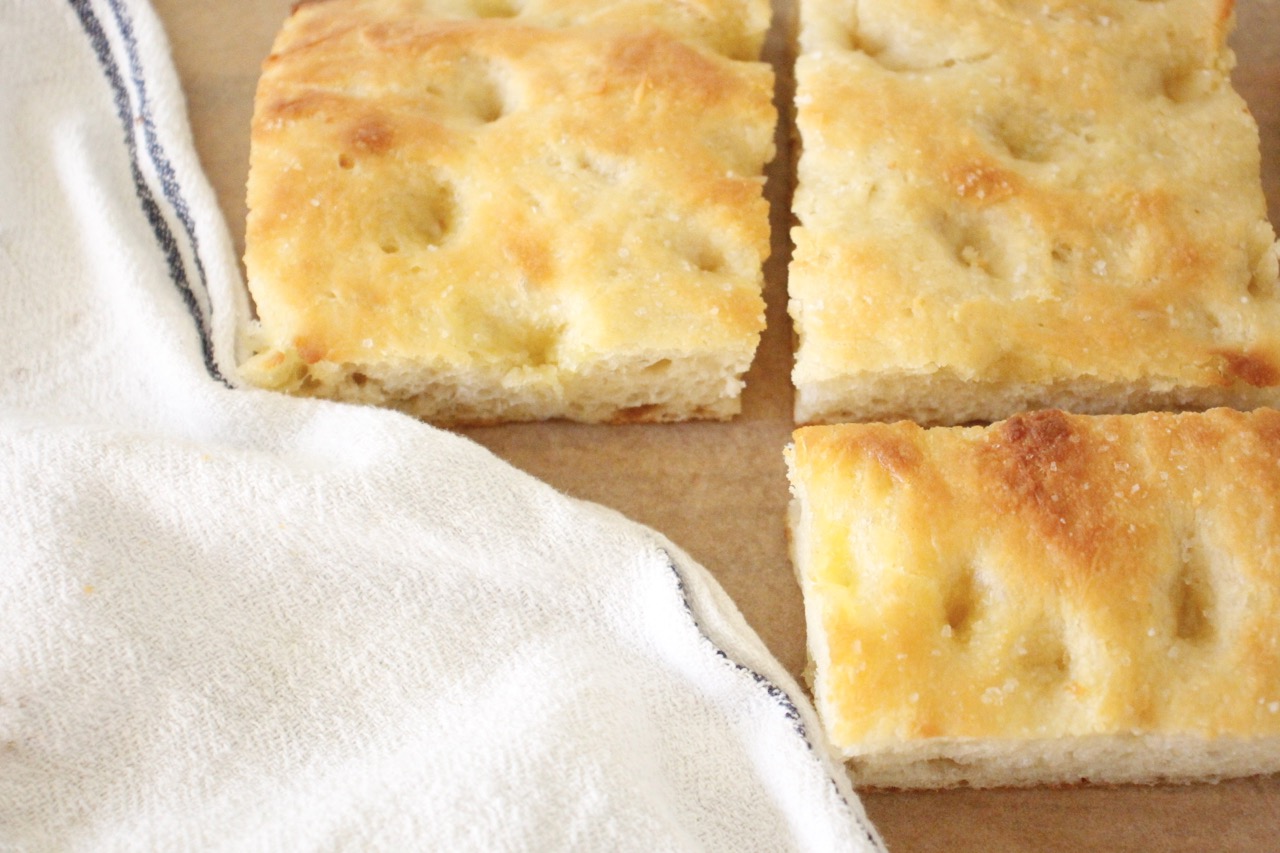
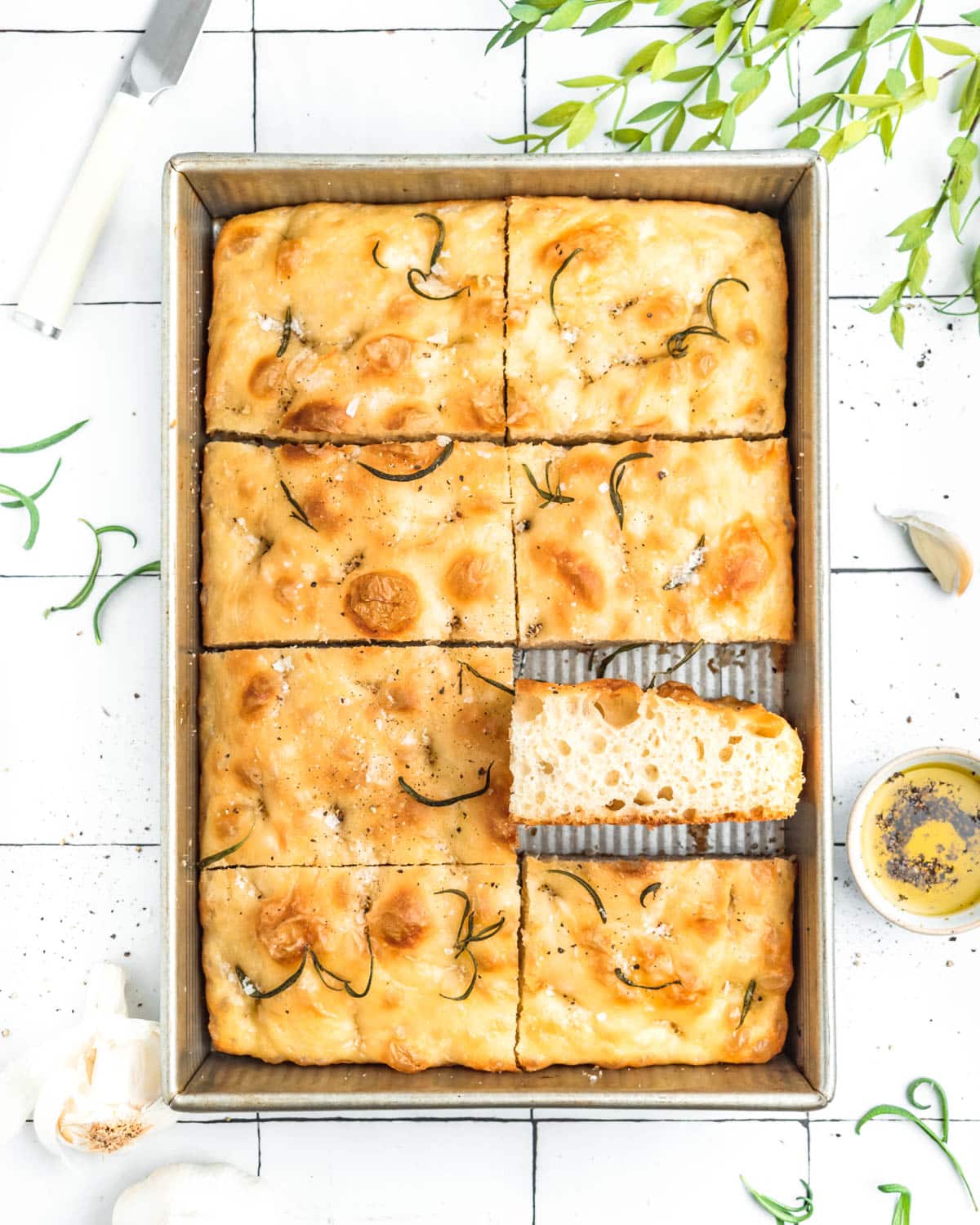

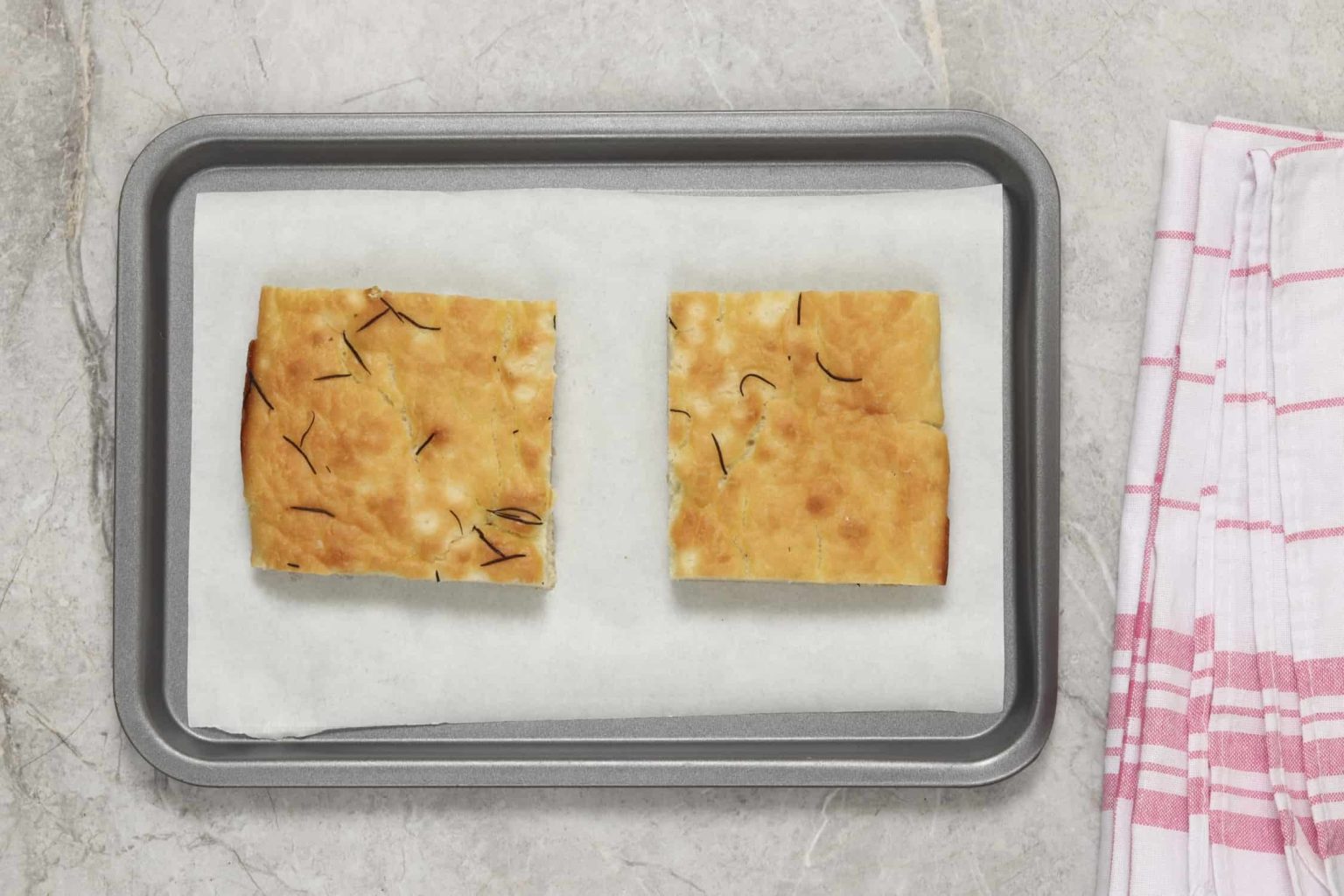
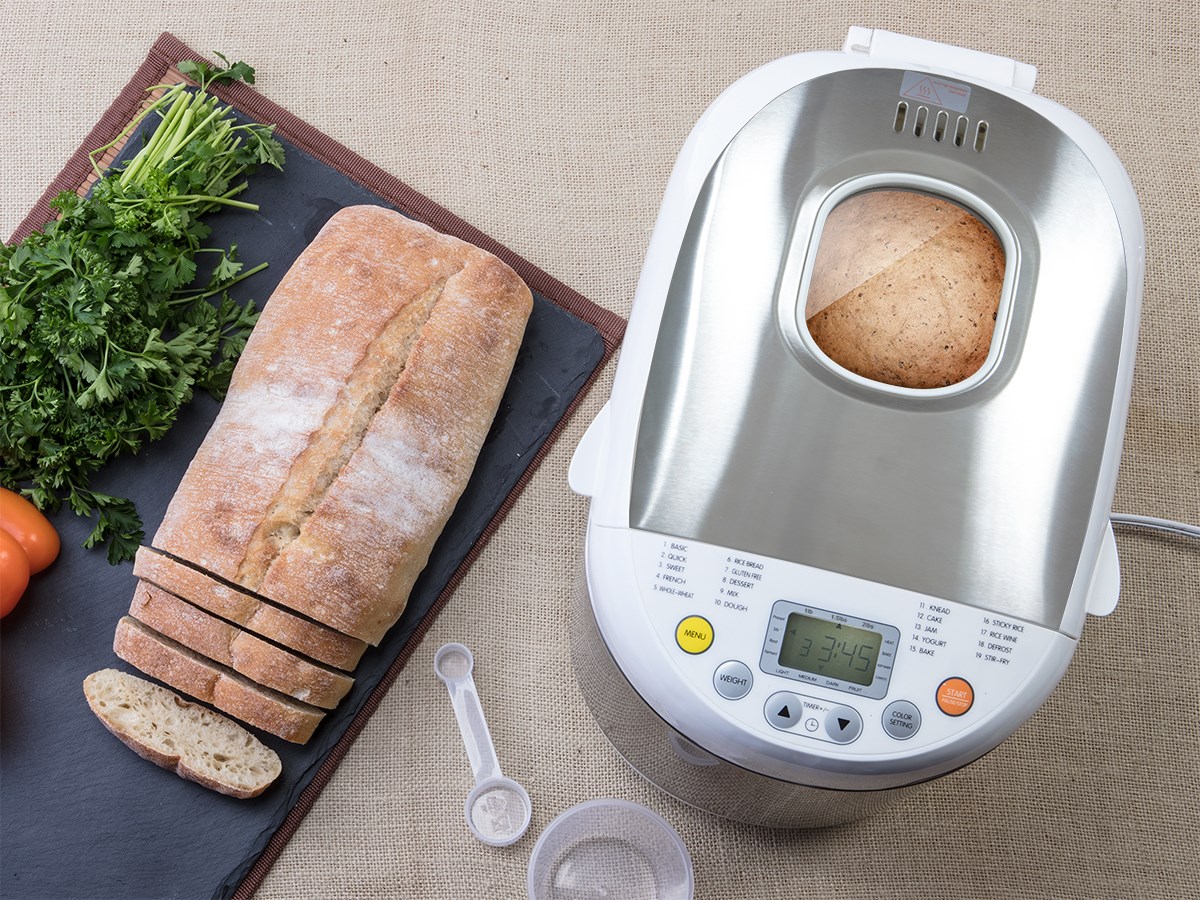

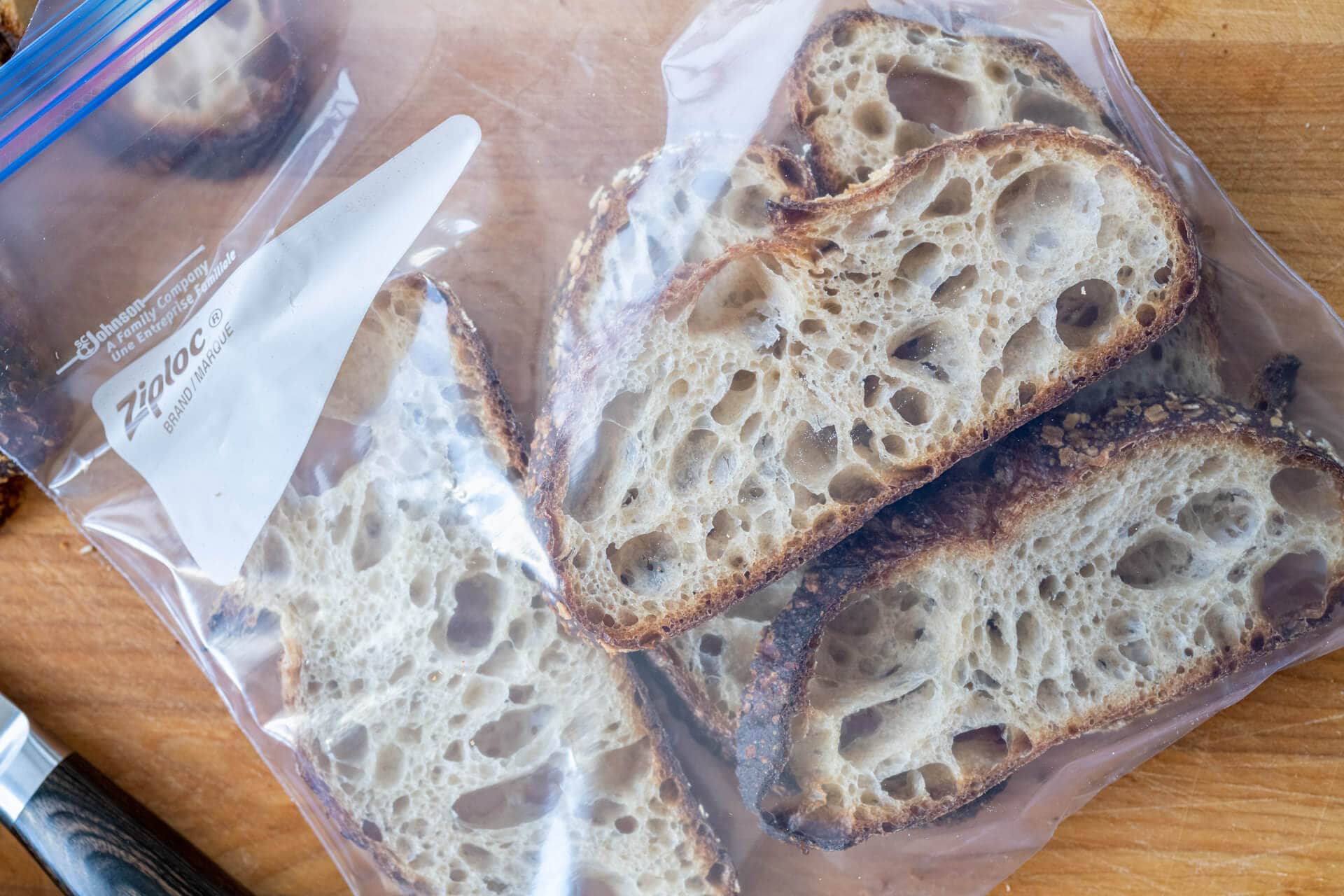

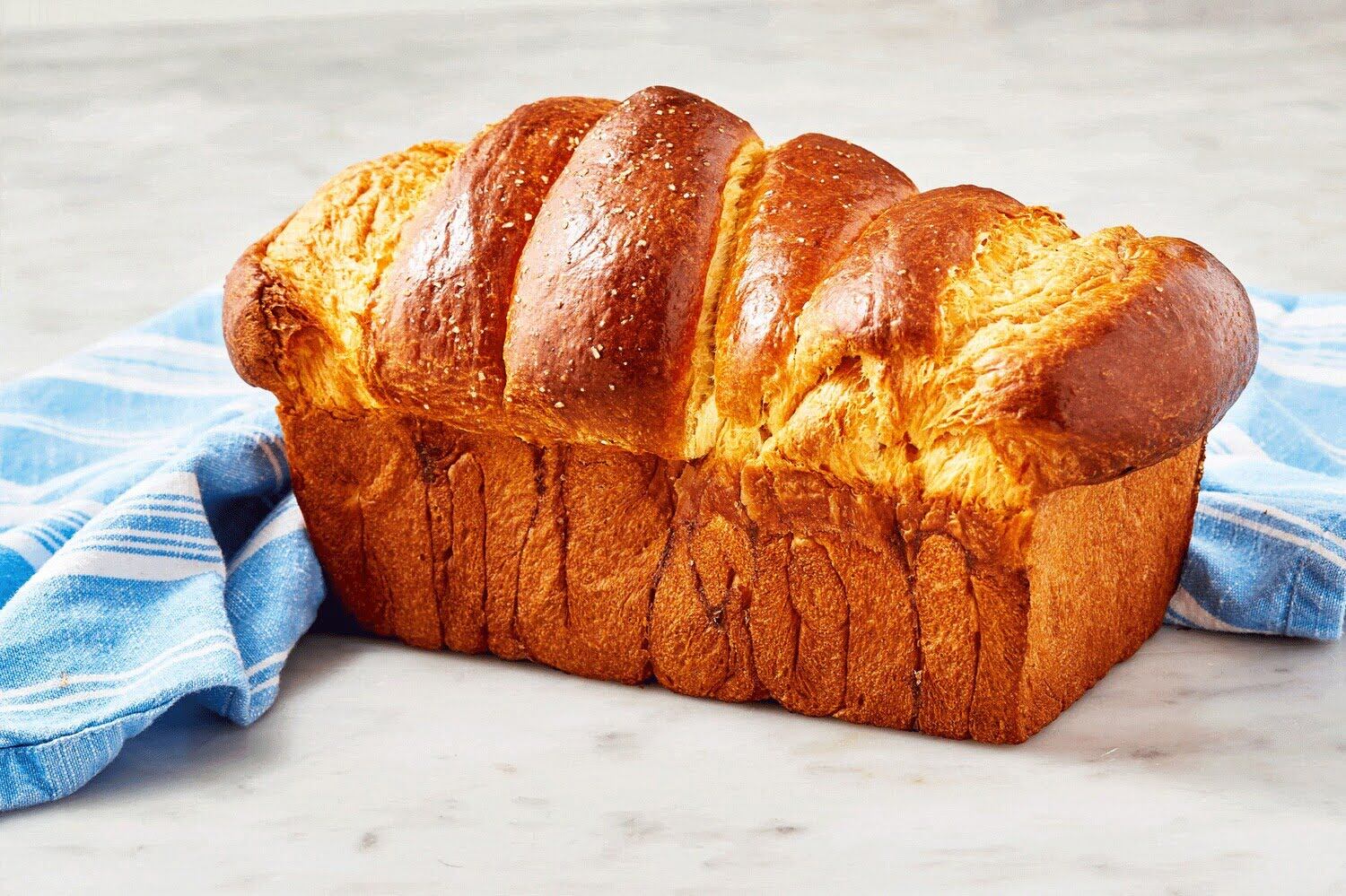

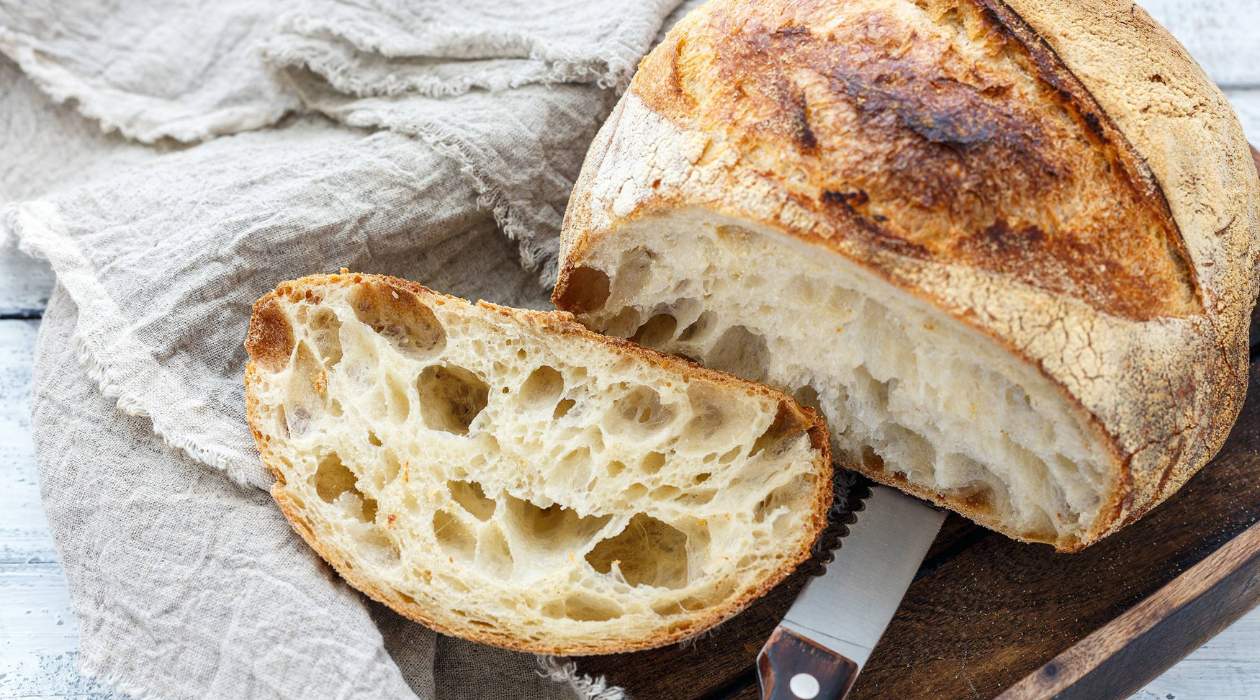
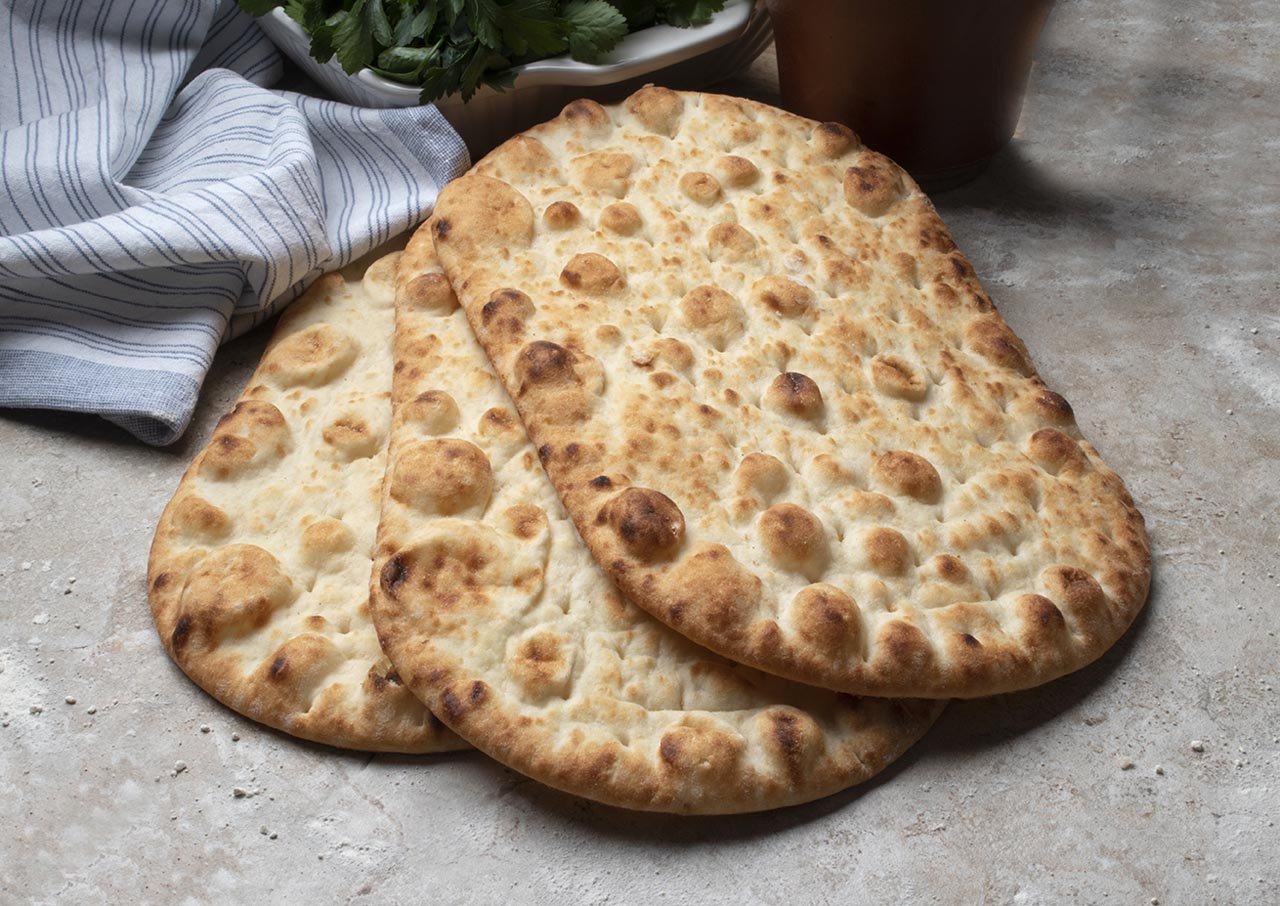
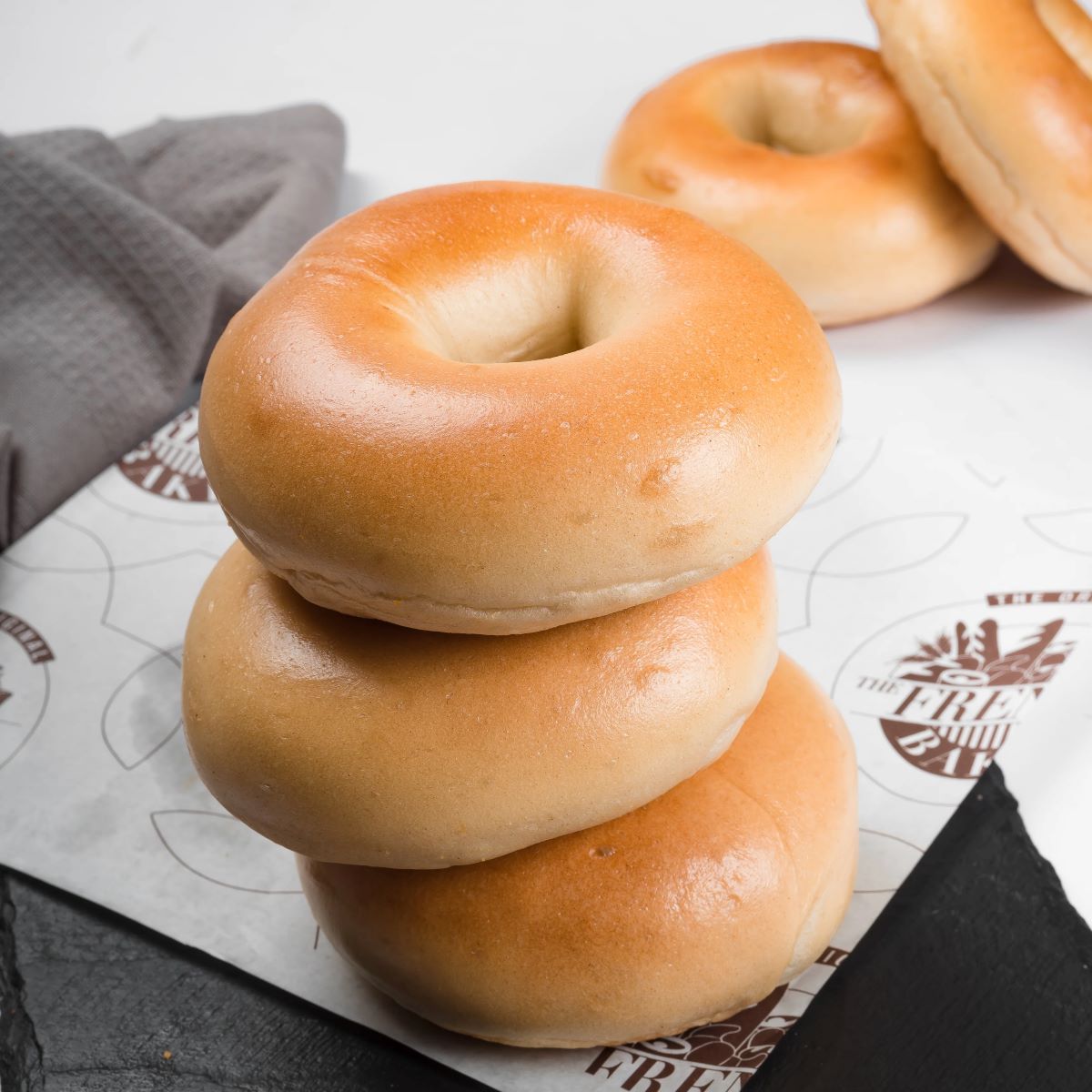

0 thoughts on “How To Store Focaccia Bread”